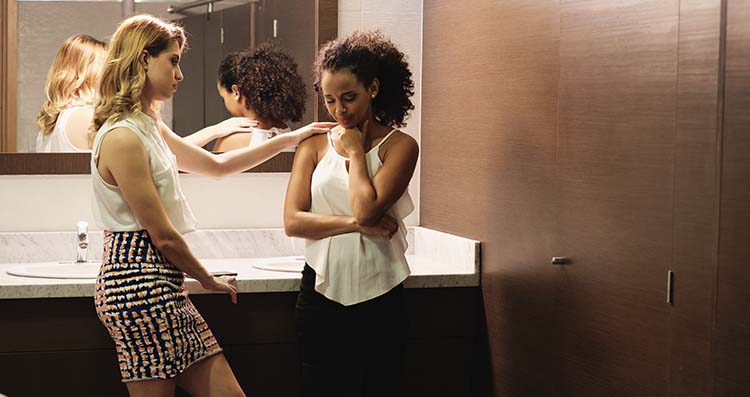Q&A – Are gender-neutral toilets necessary at work?
Your staff work best in a workplace where they feel good. Gender-neutral or gender-inclusive toilets are important for people who do not self-identify as male or female. What is stipulated about gender-neutral toilets by the welfare act?
In short
As an employer, you are legally required to provide separate toilets for men and women. Moreover, you may provide gender-neutral toilets, although it is not obligatory. Your prevention adviser takes the lead in this matter.
What is stipulated by the welfare act?
The welfare legislation still requires a classic dichotomy between men and women: “Changing rooms, washbasins, showers, and toilets must be completely separate from the workplace. Men’s and women’s toilets must be completely separate.”
But the legislation does not exclude gender-neutral toilets over and above separate toilets for men and women.
As an employer, you must consult the prevention adviser-occupational physician and the committee for prevention and protection at work. When appropriate, they can recommend providing additional gender-neutral toilets.
Read the passage on sanitary facilities in the welfare act here.

Advice on toilets for transgender people
The welfare legislation does not provide practical advice. However, in 2021, the Institute for Gender Equality published an opinion on the use of sanitary and hygienic facilities by transgender people at work. Among other things, it states:
“As an employer, you are legally obliged to provide people in the workplace with access to the sanitary and hygienic facilities that correspond to their gender identity and expression. In this respect, you may also provide – in addition to men’s and women’s toilets – existing, separate, and neutral toilets.”
The Institute for Gender Equality links this to some recommendations to ensure the dignity and inclusivity of all staff as much as possible:
- Infrastructural changes (where possible): separate cubicles in the changing rooms and for urinals are a solution for transgender staff in the workplace. Installing gender-neutral toilets can be a solution for gender-fluid or non-binary people, as long as those toilets are open to all staff and nobody is required to use them.
- Clear policy and raising awareness: provide a clear, universally accessible policy for everyone about the use of sanitary facilities by transgender people. This can prevent many conflicts. Moreover, raising awareness among employees is also crucial to better understand transgender people’s situation.
- Consultation and creative solutions: If a transgender person decides to share their gender identity, ask them about their wishes and expectations. Gender-neutral toilets may be such an expectation. Solutions are different for each organisation depending on the space and resources available. In any case, involve the transgender person and colleagues as much as possible in finding the solution.
Consult the full recommendation of the Institute for Equality between Women and Men here.
Tips and tricks for gender-neutral toilets
What can you do practically as a company if you want to provide gender-neutral toilets? Çavaria, the Flemish advocate for LGBTI+ people and umbrella organisation of LGBTI+ organisations, helps out with some tips and tricks:
- Use neutral signs to indicate the facilities available in the existing toilets: a toilet, urinal, changing pad, etc.
- Install a mirror and, if possible, a washbasinin all toilet areas. Provide a waste bin for sanitary towels and tampons in all toilets.
- Put urinals in easily lockable toilet cubicles.
- Provide training for your staff, so that no one is denied access unjustly.
Use Çavaria’s website to find out more background information on these tips.
Looking for practical advice on how to provide gender-neutral toilets in your organisation?
Contact an expert on psychosocial issues through the form below or contact the Diversity Policy Office of the Flemish Government.